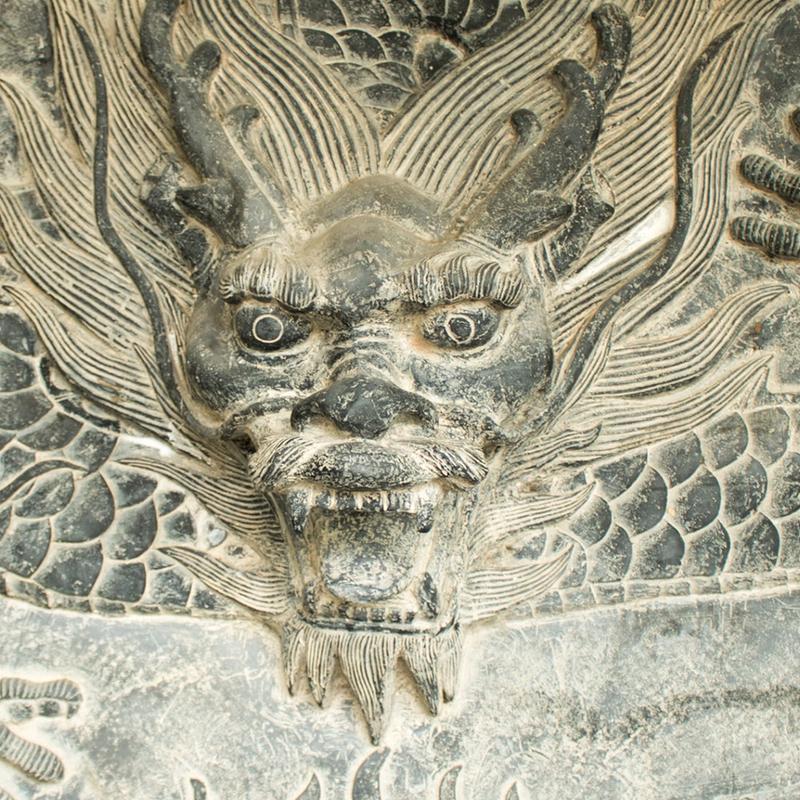1. Demons are fallen angels.
Sometimes our theology textbooks state that sin first came into the world with the sin in the garden, but already there was a fall before the human fall. The serpent came into the garden from the outside and with evil intent (Gen. 3:1—2). The serpent questioned God’s goodness by insinuating that God was withholding something good from his human images. Later in Scripture, the devil is described as that ancient serpent (Rev. 20:2). How much more we would like to know about all this. However, Scripture is addressed to us and not to angels. What we do know is that Satan leads an army of rebellious angels (Rev. 12:7—8), who are now cast out of heaven. Demons are these fallen angels. Demons are not ministering spirits, but spoilers.
2. Demons have a leader.
Satan is their leader. Was he a cherub gone wrong or was he an archangel gone wrong? We do not know for sure. Michael and his angels defeat him and his angels in battle. So, he was defeated by an archangel (Rev.12:7). Scripture has a number of titles in addition to Satan and devil that sum him up. Millard J. Erickson[1] provides a handy summary of them: Several other terms are used of him less frequently: tempter (Matt. 4:3; 1 Thess. 3:5), Beelzebul (Matt. 12:24, 27; Mark 3:22; Luke 11:15, 19), enemy (Matt. 13:39), evil one (Matt. 13:19, 38; 1 John 2:13; 3:12; 5:18), Belial (2 Cor. 6:15); adversary (1 Peter 5:8), deceiver (Rev. 12:9), great dragon (Rev. 12:3), father of lies (John 8:44), murderer (John 8:44), sinner (1 John 3:8).
3. Satan and his demonic entourage have limitations.
Satan and demons are powerful spirits, but they are not omnipresent, omniscient, or omnipotent. Regarding omnipresence–demons can leave a man and enter pigs (Mark 5:13). Regarding omniscience–angels, and we can safely surmise fallen angels also, do not know the day and hour of the return of the Son of Man (Matthew 24:36). Regarding omnipotence–no angel, ruler or power can separate the believer from the love of Christ (Rom. 8:38). In some Christian circles, devilish power, knowledge, and presence are inflated.
4. The diabolic aim is worship.
It has been said that the world says to us, Conform to me!, the flesh says to us, Satisfy me!, and the devil says to us, Worship me! There is biblical evidence to support each of these. Respecting the last idea of the three, the devil’s tempting of Jesus in the wilderness climaxes with this invitation (Matthew 4:8—9): Again, the devil took him to a very high mountain and showed him all the kingdoms of the world and their glory. And he said to him, All these I will give you, if you will fall down and worship me. This appears to be the devil’s ultimate motivation: the desire to be worshipped. But to do so is idolatry. It is worshipping the creature rather than the Creator (Rom. 1:24—25).
5. There are two important diabolic guises.
The devil is a deceiver (Rev. 12:9). The apostle Paul warns the Corinthians that the devil can disguise himself as an angel of light (2 Cor. 11:14). Paul is writing about the danger of false teachers who disguise themselves as apostles of Christ (2 Cor. 11:13). These deceitful workmen are agents of the great deceiver. False teaching, false gospel, and false teachers still persist and trouble the churches. This may be particularly so in the West. I once heard a pastor who had been imprisoned by the communist regime in the Soviet days say that the DD degree can stand for Doctor of Divinity or Doctor of Darkness.
However, there is another guise that is not subtle at all. It shows itself in persecution. Peter uses a startling metaphor in application to the devil (1 Pet. 5): Be sober-minded; be watchful. Your adversary the devil prowls around like a roaring lion, seeking someone to devour. Peter has persecution for the faith in mind as the next verse shows (1 Pet. 5:9): Resist him, firm in your faith, knowing that the same kinds of suffering are being experienced by your brotherhood throughout the world. There are Christian brothers and sisters in non-western parts of the world are experiencing the roaring lion as I write.
6. Christ is the victor over Satan.
Jesus came into the world as the incarnate Son of God to accomplish more than one thing. Here is a sampling. Jesus came to reveal the Father (John 1:18), to be a model for the disciple’s behavior (John 13:12—15; 1 John 2:6); to be our great high priest (Heb. 4:14—16); to die for our sins in our place (Heb. 10:1—10; 1 John 4:8—10), and to defeat the devil (1 John 3:8). He defeats the devil by tasting death for us (Heb 2:14—15). The devil’s power lies in bringing death. After death comes judgment (Heb. 9:27—28) and the fear of it. But if Jesus has addressed the matter of judgement on the cross, and he has, then the believer’s fear is relieved (Col. 2:13—15).
7. Demon inhabitation is real.
Demon possession is the stuff of movies. The Exorcist comes to mind as a classic horror movie. However, some scholars contest the use of possession to characterize a demon’s grip on a human subject. These scholars prefer to describe the man presented in Mark 5 as demonized. The traditional descriptor is demon-possessed. I prefer the descriptor demon inhabited.” Mark 5:1—20 provides an illuminating example. Jesus permits the demons to come out of the man and to enter the pigs (cf. Mark 5:10—13). Another example is the parable Jesus told of an unclean spirit going out of a person. The unclean spirit returns to the person who is compared to a house, which the returning evil spirits now indwell (Luke 11:24—25). Spatial imagery is used in both instances. The idea of possession may give the impression of ownership, whereas the demons are squatters. The language of demonized may be too broad to be overly useful.
8. Believers cannot be demon inhabited.
Can believers be demon inhabited? This is a question which many ask. Theologically considered, it is hard to believe that it is possible that a believer can both be a dwelling place for a demon and the temple of the indwelling Holy Spirit (1 Cor. 6:19 and 2 Cor. 6:16). However, there is every reason to believe that a believer may be demonized in the sense of oppressed by demonic malevolence (1 Pet. 5:8—9). Likewise, the devil may actively seek to harass a godly servant as Paul tells the Corinthians (2 Cor. 12:7). In brief: inhabited, no; oppressed, yes.
9. The devil and demons have no future with God.
It is surprising to learn that some very important early-church thinkers were of a very different opinion. Origen (d. c. AD 354) was one of the greatest speculative theologians in the history of the church. He argued that all will be saved, including the devil. Gregory of Nyssa (AD 335—394) was more cautious about making the same claim. He hoped, though, that the devil will be saved. For his boldness, Origen was condemned by the Council of Constantinople II in AD 553, but Gregory of Nyssa was not. The scriptural testimony is plain–the devil and his servants, the false prophet and beast from the sea, will be in the lake of fire eternally (Rev. 20:9—10). One can surmise that the devil’s other servants, the demons, will face the same fate.
10. We may have a blind spot.
Paul G. Hiebert was raised in India but trained in the West as an anthropologist and missiologist. He came to realize that his western training had made him become unaware of the world of spirits both good and evil, which the majority world has never lost sight of. He called this blind spot the flaw of the excluded middle. He thought that many western Christians may have an espoused theology affirming angels and demons, but in practice have an operational theology that lives as though God and ourselves were the only intelligences. The blind spot will show itself in our prayers if we never pray that the risen Christ might continue to bind the strongman, as it were, and spoil his goods through the victory of the cross.
Content adapted from Against the Darkness by Graham A. Cole. This article first appeared on Crossway.org
Notes
- ^ Millard J. Erickson, Christian Theology, 3rd ed., 417.






